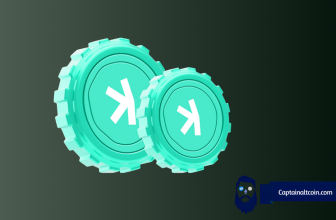
Prof. Dr. Aleksander Berentsen and Fabian Schär from the University of Basel believe that Bitcoin and crypto currency can establish themselves the means of payment in current system. Among other things, they drew this conclusion by researching money from the aspect of its controll.
Is Bitcoin suitable for currency? Theoretically, yes. Researchers from the University of Basel also share this conclusion. In their paper “The Case for Central Bank Electronic Money and the Non-Case for Central Bank Cryptocurrencies” Prof. Dr. Aleksander Berentsen and Fabian Schar compared, among other things, different types of money in terms of the way they are controlled. It shows: Bitcoin is unique among the competition.
To understand this uniqueness of Bitcoin, Schär and Berentsen said in their paper, it helps to understand the way money is controlled. To understand this better, they list three criteria:
representation, transaction and production.
What you'll learn 👉
Physical money
Cash is physically represented, it is tangible. In the form of coins or notes, for example, the objects directly represent the exchange value they promise. This does not require a central register; who owns how much cash at what time is irrelevant to the cash transaction. To use cash, you do not need to register with a central authority. In this sense, Berentsen and Schär refer to cash as a decentralised payment system that does not require third parties. But that is only valid for its transactions – not its production: central banks or treasuries or governments are involved in cash production in almost all cases. So production of cash is not competitive.
The same applies to gold: this is also physically represented and it is independent of the authority in the transaction. (It should be noted, however, that gold is only conditionally accepted as a medium of exchange). The manufacturing process, on the other hand, is accessible to everyone.
The main advantage of cash is its anonymity and accessibility. However, a third party is needed here for production – without a central bank or treasury there is usually no cash either.
Virtual money
For virtual money, researchers distinguish between deposits with private banks and electronic money from central banks. Virtual money therefore has no physical representation – it exists only in the accounts of the banks, as an entry in an accounting system. However, this also makes it easier to transfer than cash – no one really has to be there to exchange money.
In most countries, according to researchers, households and businesses use private banks to make electronic payments. There are also credit cards, debit cards, cheques and online banking. Banks compete for customers’ deposits – so production of this virtual money is competitive field. It is a centralised payment system – the banks are the intermediaries.
In the case of virtual money from central banks, however, public access is limited. In Switzerland, only around 200 intermediaries have accounts with the Swiss Central Bank. Central bank money is thus monopolised and transactions take place in a centralised payment system.
The advantage of virtual money is that you can use it to make quick transfers. In addition, it offers the possibility of ensuring the exchange even without the presence of the participants. However, it is not accessible to everyone.
Bitcoin
Bitcoin, on the other hand, behaves differently. The ownership rights are decentralized, the block chain is the accounting system that monitors the transactions, the miners are the accountants. Crypto currencies thus combine the advantages of virtual money transactions with the independence of decentralised transactions, according to Berentsen and Schär. It is also competitive in production.
Bitcoin maintains the advantage of cash and can eliminate its disadvantage: It does not need a mediating authority, is pseudonymous and can cross national borders. With the latter aspect, it makes use of the advantages of “virtual” money that it does not have to be issued by central authorities. Thus, it is also independent in the production process and even more competitive.
Conclusion
So much for the theory. As Berentsen and Schär admit in their paper, Bitcoin is still struggling with some difficulties. So the question of scaling still has to be answered appropriately. In addition, there is a lack of public awareness. However, bitcoin combines the best of both worlds and has potential to replace the incumbent system in the future.








